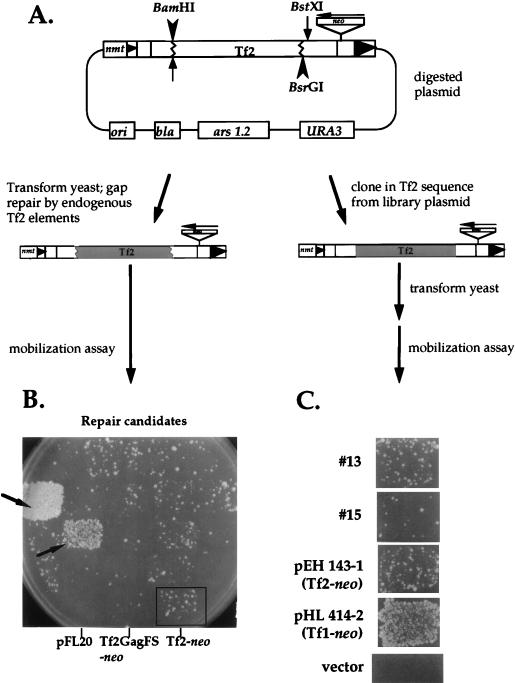FIG. 9.
Functional assays of other Tf2 elements. (A) Scheme used to assay for activity of other Tf2 elements. Either the Tf2-neo plasmid was cut with BamHI and BsrGI (arrowheads) and transformed directly into YHL912, to allow for homologous repair of the sequence between the BamHI and BsrGI sites by endogenous Tf2 elements (gray shading), or Tf2 sequences from library plasmid clones were subcloned into the plasmid’s BamHI-BstXI sites (arrows). Jagged lines are used for gap-repaired Tf2 to indicate that we do not know the points of crossover in the repaired plasmids. (B) Mobilization assay of candidates from the gap repair transformation. Candidates were chosen for being Ura+, G418r, and also FoaR in the absence of selection for a Ura+ phenotype; a subset is shown (see text). Most candidates did not show an improved mobilization phenotype when compared to Tf2-1 (box), as judged by the degree of papillation on G418-containing medium. Two of three candidates isolated that were identified as having an apparently better mobilization phenotype than Tf2-1 are shown on this plate (arrows). In all three cases, this phenotype was subsequently found to be independent of the URA3 plasmid. (C) Mobilization assay of strains transformed with plasmids carrying Tf2 sequences from random Tf2-containing library plasmids. Neither of the library clones tested (no. 13 and no. 15) exhibited an increased mobilization frequency associated with the sequence between the Tf2 BamHI and BstXI sites.

